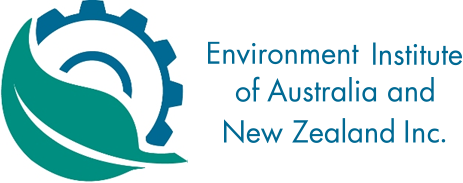-
Member Login
- Home
- About
- Institute Groups
- Membership
- Events
- News & Publications
- Institute Programs
- Resources
- Jobs Board
- Contact Us
- Site Info
EIANZ’s response to bushfires, drought and floods
The ravages of bushfires, drought and floods are having a significant impact on our communities and ecosystems. We send our sympathies to those affected by these devastating events.
As individuals we can contribute to the recovery process through giving donations, volunteering to help affected people and wildlife, joining the Rural Fire Service, and supporting affected businesses through our purchasing decisions and holiday plans.
But is there more that we can do as a profession? Are there ways that our skills and experience can provide contributions beyond our response as individuals?
There are particular ways that environmental practitioners can facilitate the recovery from the effects of bushfires, drought and floods. The International Union for Conservation of Nature (IUCN) has a program of 5 R’s:
- Restoration of ecosystems damaged by the fires;
- Rehabilitation of injured, displaced, sick or orphaned animals;
- Re-introduction of species to areas where they have been exterminated by the fires;
- Removal of invasive species to prevent their establishment in disturbed habitats where they could displace native species; and
- Red List re-assessment of species severely affected by the fires, to determine whether their extinction risk has increased.
As well as financial support for this program, which you can provide here, the expertise of environmental practitioners is needed to locate and design for the restoration of habitat for displaced species, design invasive species control programs, and assess threatened status. Also, some members may have survey data pre-bushfire of vegetation, wildlife populations and invasive species to assist in recovery evaluations. Click here for a map of areas of above normal fire conditions. EIANZ has approached IUCN to offer expertise to the organisations that they are supporting in their 5 Rs program.
There is also a longer term need for better processes in relation to developing recovery programs in advance of devastating events. Two processes that are relevant are recovery assessments and regional sustainability strategies.
- Recovery assessment is the process after impacts of an event or development exceed the sustainability limits of the affected environment. Recovery assessment is the process of developing management interventions to address the environmental damage and degradation that has already occurred. A paper setting out the recovery assessment approach and some case studies is attached here.
- Regional sustainability strategies address environmental, social and economic issues in an integrated way on a bioregional scale in order to address cumulative effects, social issues and economic viability to develop a transition strategy to deliver sustainable outcomes. A paper setting the concept and examples of its application are attached here.
Development of these strategies requires collaboration among multi-stakeholders to achieve support to facilitate implementation. The EIANZ submission to the EPBC Act Review will include recommendations for incorporating recovery assessments and regional sustainability strategies in order to address bushfires, drought and climate change.
The impact and quality of our members’ research has been highlighted by Dr Tom Beer FEIANZ, being called for comment on his 1988 paper, “Australian bushfire danger under changing climatic regimes”. The paper received national and international attention for its early insight into climate change and bushfires. The Institute's academic journal, The Australasian Journal of Environmental Management, also offers our members a platform to distribute contemporary research; such as Claudia Baldwin’s MEIANZ and Helen Ross’s FEIANZ 2019 paper, “Our warming climate and fire’s role in the Australian landscape”.
This summer has been deeply challenging and marked by tragedy and loss. The impact of climate change can feel overwhelming, with ecosystems threatened, declining biodiversity and increasingly severe weather events. However, as environmental practitioners, we can use our expertise to enact meaningful change; assisting in recovery and planning for disaster, while striving for a safer and more sustainable future.
Bryan Jenkins FEIANZ
EIANZ President
Click here to download the PDF version >
We acknowledge and value the rights and interests of Indigenous Peoples in the protection and management of environmental values through their involvement in decisions and processes, and the application of traditional Indigenous knowledge.

